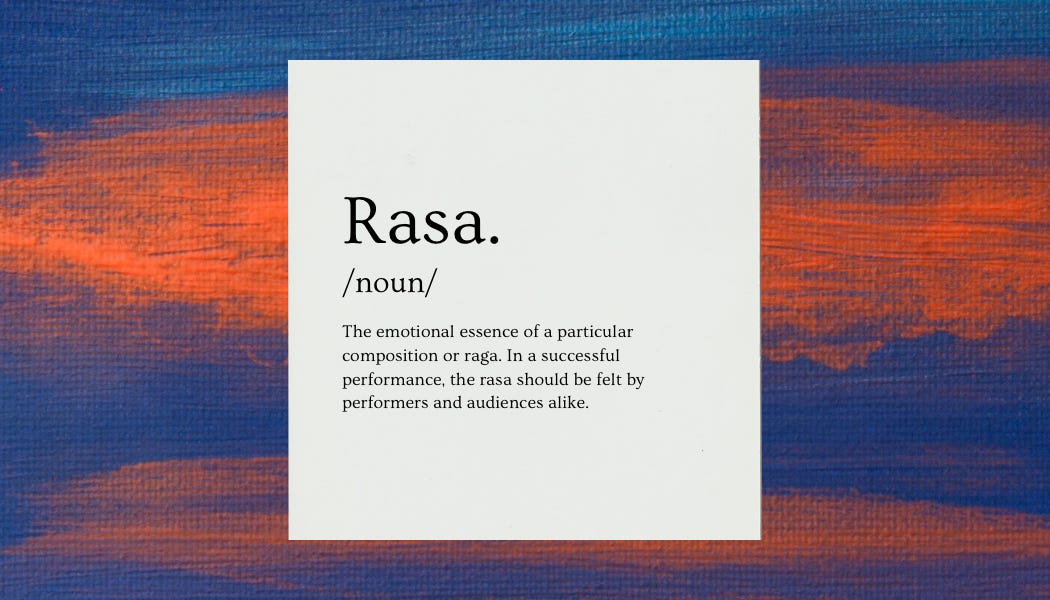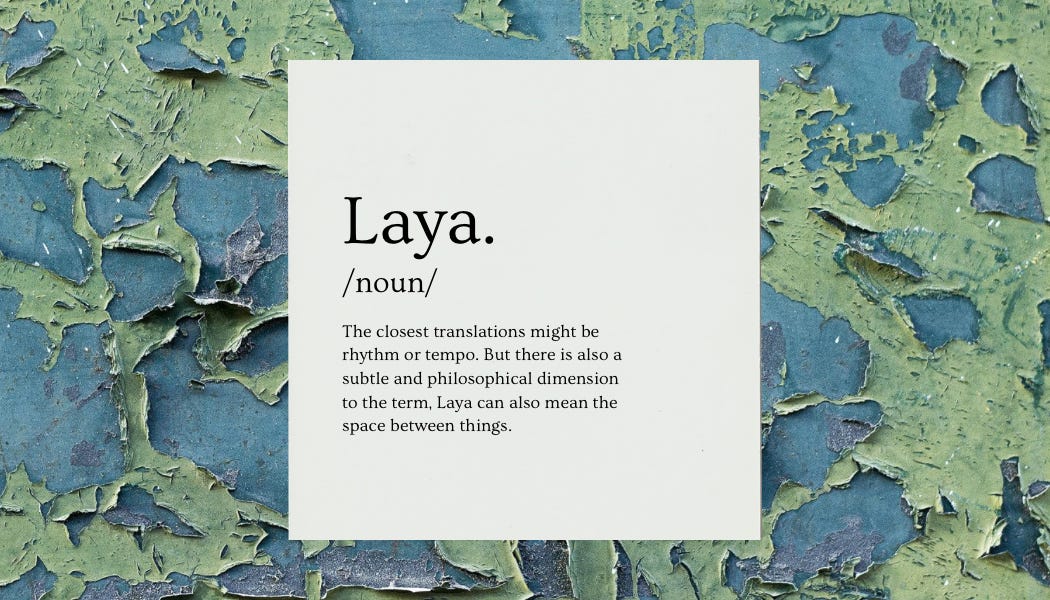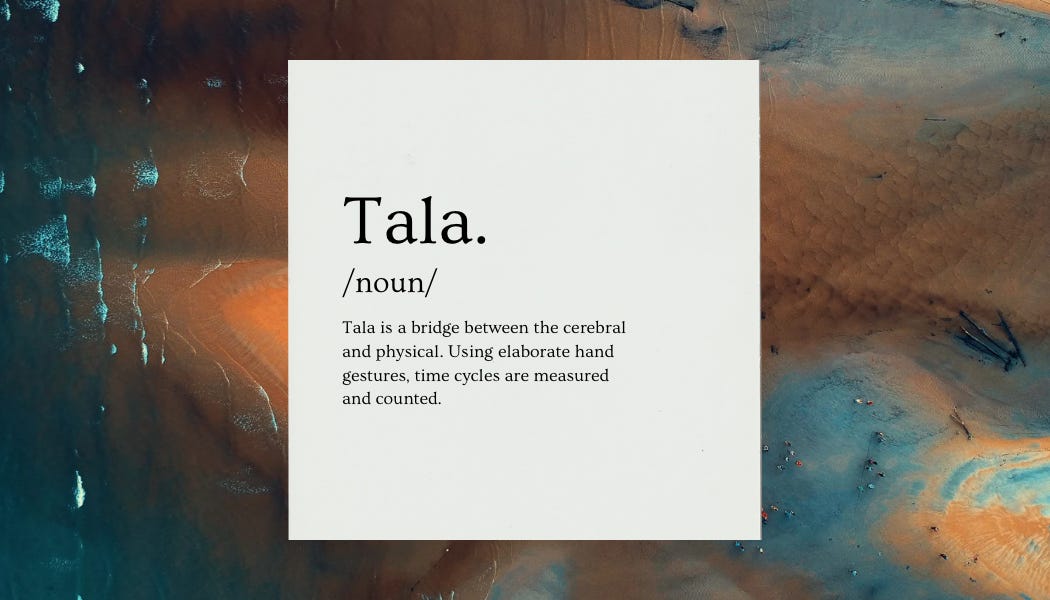The power of Indian music's untranslatable words.
The vast vocabulary of South Indian Carnatic music fosters diverse ways of imagining music.
The vast vocabulary of South Indian Carnatic music is powerful. It encourages new, idiosyncratic ways of imagining music. Some words describe ideas unique to Indian music, others express universal experiences that reach beyond the Carnatic tradition. The words are testaments to the profound culture they come from and the depth of its musical thinking.
When studying Carnatic percussion in London and Chennai, I found acquiring the vocabulary challenging and rewarding — a process that has not ended, and I imagine, never will. Understanding how the terminology interconnected felt like putting together a puzzle. A picture gradually emerged from disconnected fragments, creating an image of music that was distinct from the one I grew up with.
Carnatic music’s primarily aural tradition is reflected in its terminology. Spellings and definitions can somewhat vary, fostering a lively, disputatious culture in which terms and ideas are debated and challenged. Furthermore, its vocabulary is not limited to a single language, with Sanskrit, Tamil, and English all actively used.
It is important to note that Indian classical music comprises two traditions: South Indian Carnatic and North Indian Hindustani. The latter is how most Westerners envision Indian music: tablas, sitars, and Ravi Shankar collaborating with The Beatles and Philip Glass. South Indian music is less internationally known. It is a highly rhythmic tradition where mathematics and algorithms are used to develop compositions, and instruments like the vina and mridangam are regularly played. I have chosen a few words which have changed how I think about music, not simply broadening my understanding of the South Indian classical tradition, but also transforming how I think about Western Classical music. For those unfamiliar with them, I hope they help stimulate new ways of thinking.
Rasa
The emotional essence of a particular composition or raga. In a successful performance, the rasa should be felt by performers and audiences alike. Carnatic music has nine rasas, each corresponding to specific moods. They include Karuna-rasa, which evokes compassion, sadness, and longing, and Sringara-rasa, which evokes love, joy, and happiness. Swarasati Arts offers this valuable insight into the concept of rasa.
The most important aspect of rasa is that it lingers on long after the stimulus has been removed. We often ruminate over a concert for days and savour the joy of its memory.
Video to watch:
Yati (or Yahti)
A unique idea that unites music and geometry. Yati refers to the shape created by a rhythmic or musical phrase. It does not simply refer to the expanding and contracting concepts of augmentation and diminution found in Western classical music. Yati is comprised of six distinct shapes or forms.

Yati has potentially universal applications and is detectable in Philip Glass’s early composition, Two Pages, which was influenced by Indian classical music. Having worked as a transcriber for the famous Indian sitarist Ravi Shankar, Glass absorbed the concept of yati (though it is likely referred to by a different name in Hindustani music), influencing his compositions.
Videos to watch:
Percussion solo by Patri Satish Kumar and Shri Udupi Sridar (reducing yati ‘Gopucha Yati’)
Laya (or Layam)
I know a Carnatic percussionist who named his daughter Laya out of love for this concept. The closest translation of Laya might be rhythm or tempo, but both are inadequate, as there is a subtle dimension to the word that refers to the spacing of sounds. A person with a good sense of Laya spaces notes well. A way to think of this is that we can look at our planet as being defined by the shapes of its continents, but it is equally possible to reverse our perception and define it by the shapes of its oceans. In a similar manner, Laya often emphasises and modifies space rather than notes.
Video to watch:
Tala (or Talam)
The Tala is a bridge between the cerebral and physical. Using elaborate hand gestures, time cycles are measured and counted. The hand’s sensitivity allows the time to be felt internally, almost like dancing, while the fingers act as a map for the musician to locate themselves within the cycle. Its apparent simplicity is deceptive, since a consistent, graceful tala requires years of practice. It is not only musicians who measure tala, but audience members too, both seeking to root themselves deeply within a composition’s time cycle.
Video to watch:
Gamaka
The microtonal world of gamakas makes use of the entire audible sound frequency spectrum through advanced methods of pitch modulation. Swaras, or notes, can be treated as starting and ending points, joined together by complex pitch modulations. Gamakas are not just confined to singers and melodic instrumentalists, as percussionists use them too. An Indian classical percussionist can bend pitches of notes in ways that give them a distinctive, watery, melodic quality.
Video to watch:
Rasika
A person with deep knowledge about Carnatic music, but who is not necessarily a musician. The word has something of a counterpart in ‘connoisseur’, but while connoisseur carries antiquated, ironic, or even pretentious connotations, rasika is an actively used term. A rasika is expected to have specific knowledge about Carnatic music and be capable of detecting certain ragas or talas by ear.
Video to watch:











Great stuff: You might find this of interest. It's an album called "Laya" by German percussionist Simon Popp; I love the record but wasn't aware of the meaning of the concept:
https://www.youtube.com/watch?v=J4LYRd6zst4
Fascinating and wonderfully clear. Very helpful to have the videos for each description signposted